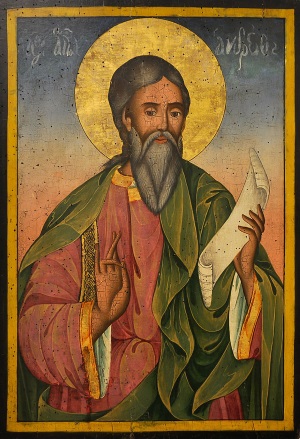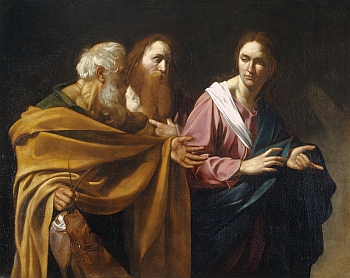Celebrating Scotland's Patron Saint On St Andrews Day Monday 30 November 2015

St. Andrew's Day (Scottish Gaelic: Là Naomh Aindrea) is Scotland's official national day. Who was St Andrew and why is he Scotland's Patron Saint?
St Andrew has been the patron saint of Scotland from at least the mid tenth century and legend says long before. He was born in the village of Bethsaida on the Sea of Galilee in the early 1st century and is the brother of St Peter. According to the Gospel of St John, Andrew was a follower of the preacher John the Baptist and then became a disciple of Jesus who he recognised as the Messiah. A messiah is associated with Abrahamic religions which originate in the Middle East. Christianity is one of these religions and Jesus Christ in that religion is seen as the son of god. Andrew was one of the twelve apostles who was present at the Last Supper. Interestingly his name, Andrew, is not Hebrew in origin as might be expected, but Greek. St Andrew is thought to have died in the mid to late 1st century and was said to have been crucified on a diagonal or X-shaped cross which is now known as St Andrew’s cross.
The spread of Christianity to Scotland mainly came from Ireland in the fifth century. The national flag of Scotland (Scottish Gaelic: Bratach na h-Alba) is a white cross against a blue background. It is known as the Saltire and legend dates its origins back to King Óengus mac Fergusa (Óengus II) who defeated a force of invading Angles in the ninth century. The legend is that in 832 AD the Scottish King prayed to St Andrew for help to defeat the English. Against the blue sky the diagonal white cross appeared and it was on such a cross that St Andrew had been martyred. The English were beaten and honouring his promise prior to the great victory Óengus made St Andrew the patron saint of Scotland. The association of St Andrew with Scotland goes back further than the reign of King Óengus II to Óengus I who was King from 732 to 761 AD. Legend also says that relics of St Andrew were brought from Constantinople in about the middle of the tenth century to the place where the town of St Andrew’s (Scottish Gaelic: Cill Rìmhinn) now stands.

Throughout Scotland people and those of Scottish descent around the world will celebrate St Andrews Day on 30th November. Celebrations will see the Saltire flown proudly, kilts worn and pipe bands marching and playing. So on this celebration of Scottish identity and the national day of Scotland we wish everyone A Very Happy St Andrew’s Day.
- Scottish
- English
- Log in to post comments





